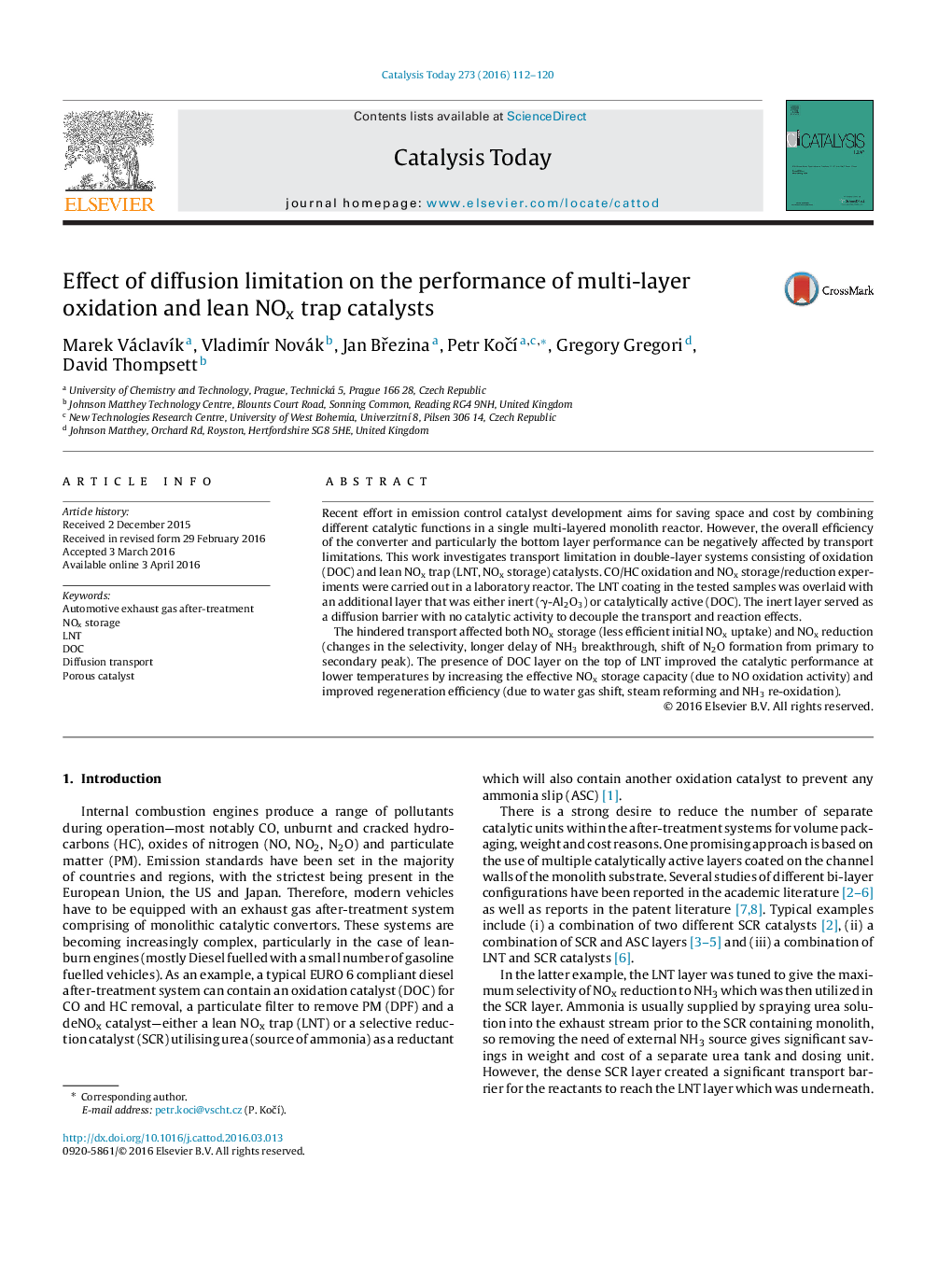| کد مقاله | کد نشریه | سال انتشار | مقاله انگلیسی | نسخه تمام متن |
|---|---|---|---|---|
| 53229 | 46955 | 2016 | 9 صفحه PDF | دانلود رایگان |

• Multi-layer catalytic converters save space, cost and improve cold-start emissions.
• Pollutants conversion may however be lowered by transport limitations.
• Presence of additional layer affects CO/HC oxidation, NOx storage and reduction.
• Added DOC layer increases NOx conversion in the LNT at lower temperatures.
• This work provides a guide for double-layer monolith design.
Recent effort in emission control catalyst development aims for saving space and cost by combining different catalytic functions in a single multi-layered monolith reactor. However, the overall efficiency of the converter and particularly the bottom layer performance can be negatively affected by transport limitations. This work investigates transport limitation in double-layer systems consisting of oxidation (DOC) and lean NOx trap (LNT, NOx storage) catalysts. CO/HC oxidation and NOx storage/reduction experiments were carried out in a laboratory reactor. The LNT coating in the tested samples was overlaid with an additional layer that was either inert (γ-Al2O3) or catalytically active (DOC). The inert layer served as a diffusion barrier with no catalytic activity to decouple the transport and reaction effects.The hindered transport affected both NOx storage (less efficient initial NOx uptake) and NOx reduction (changes in the selectivity, longer delay of NH3 breakthrough, shift of N2O formation from primary to secondary peak). The presence of DOC layer on the top of LNT improved the catalytic performance at lower temperatures by increasing the effective NOx storage capacity (due to NO oxidation activity) and improved regeneration efficiency (due to water gas shift, steam reforming and NH3 re-oxidation).
Figure optionsDownload high-quality image (301 K)Download as PowerPoint slide
Journal: Catalysis Today - Volume 273, 15 September 2016, Pages 112–120